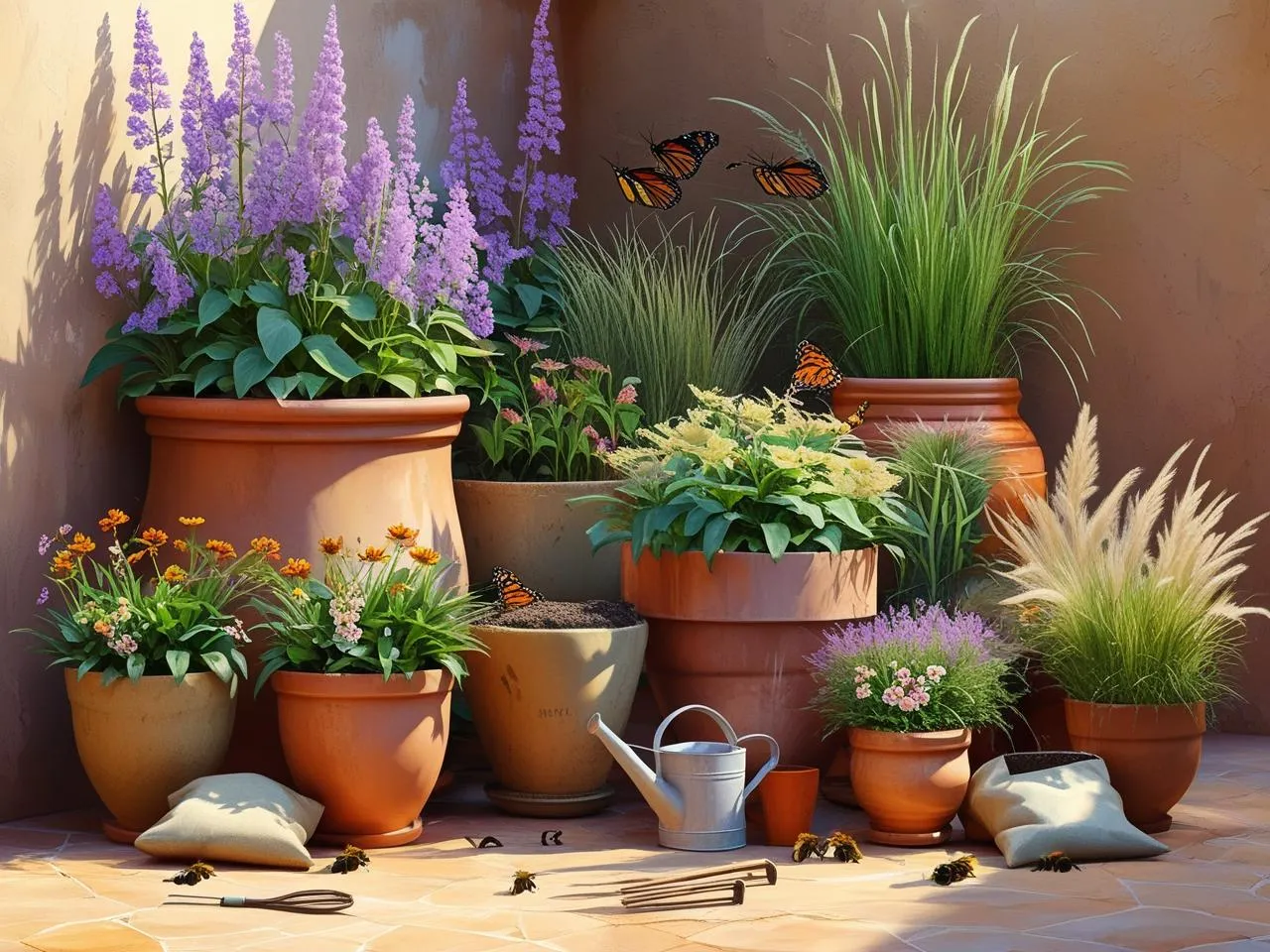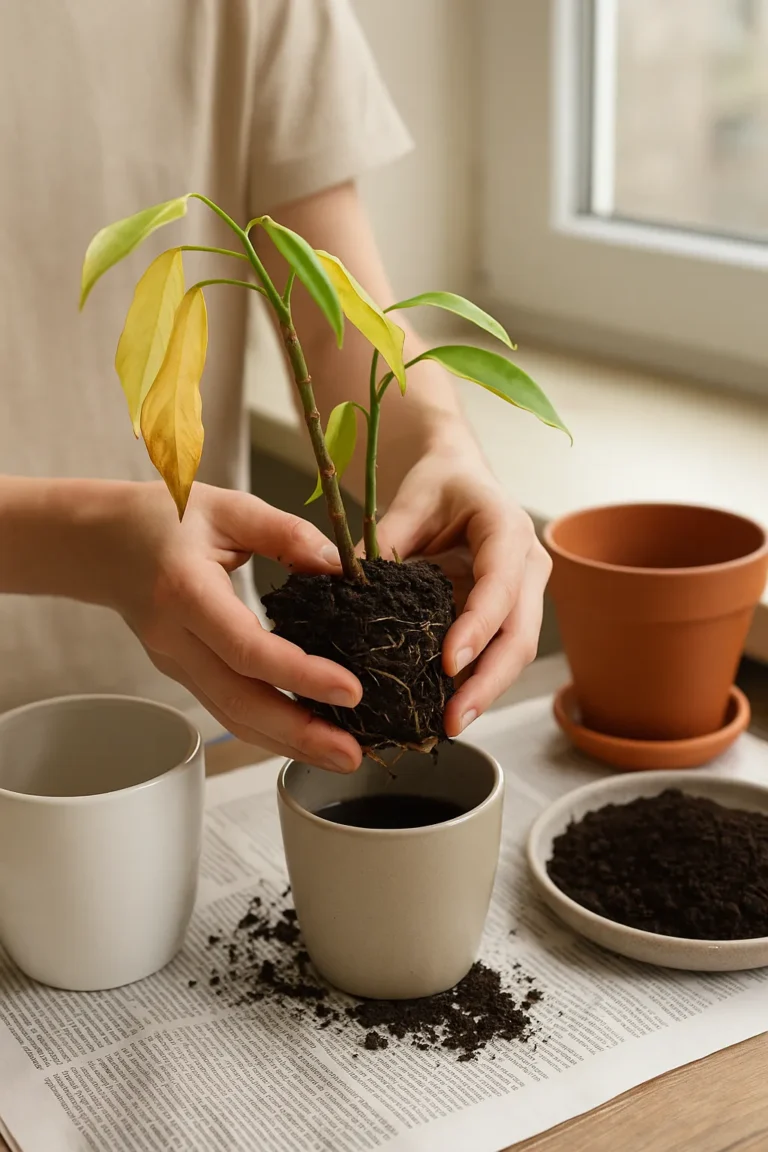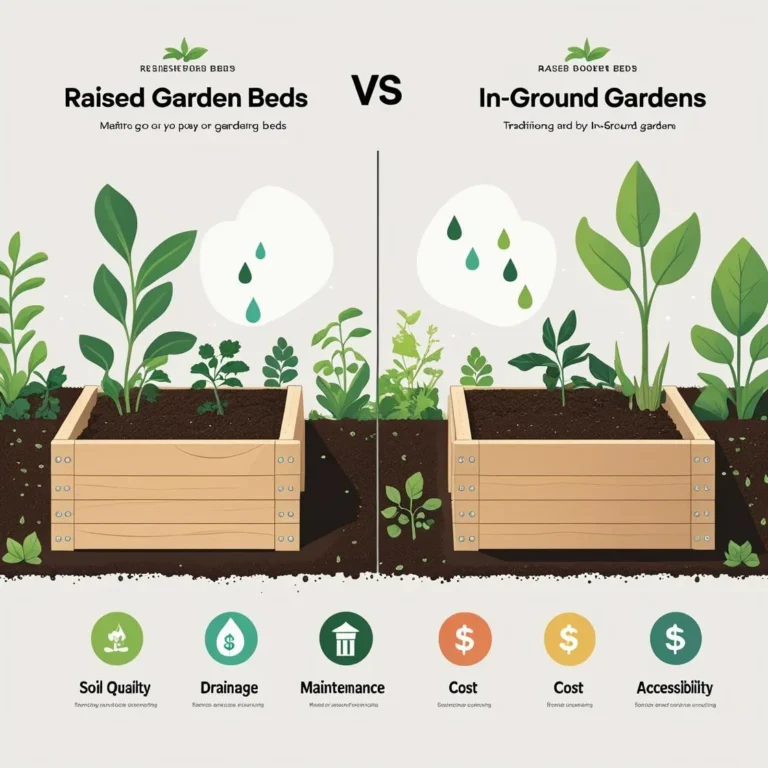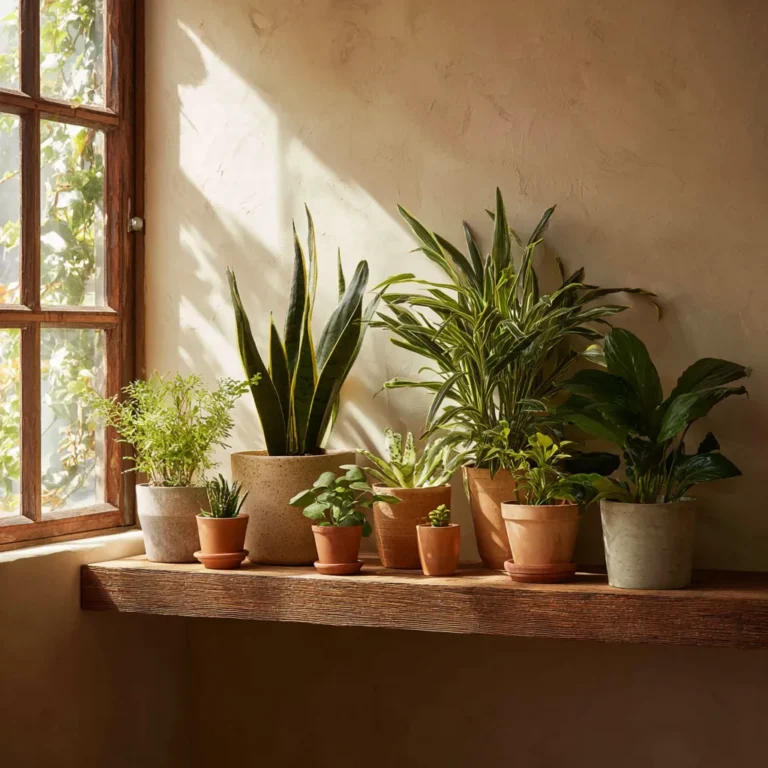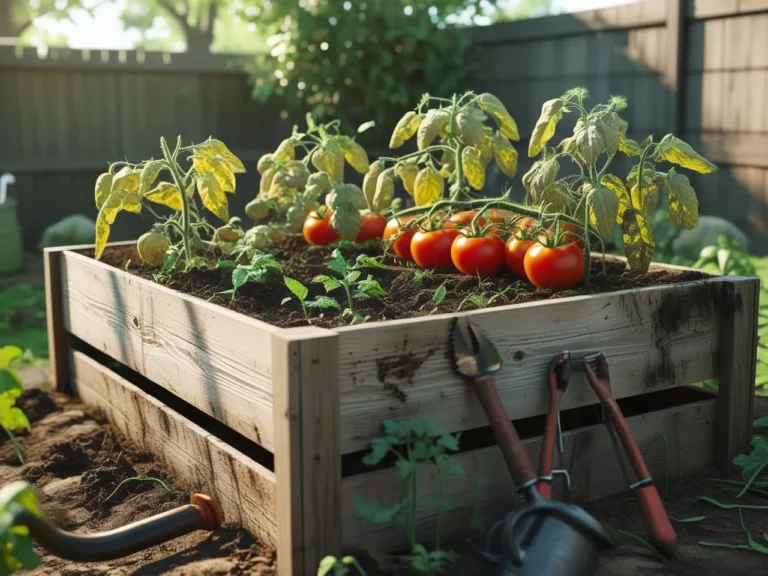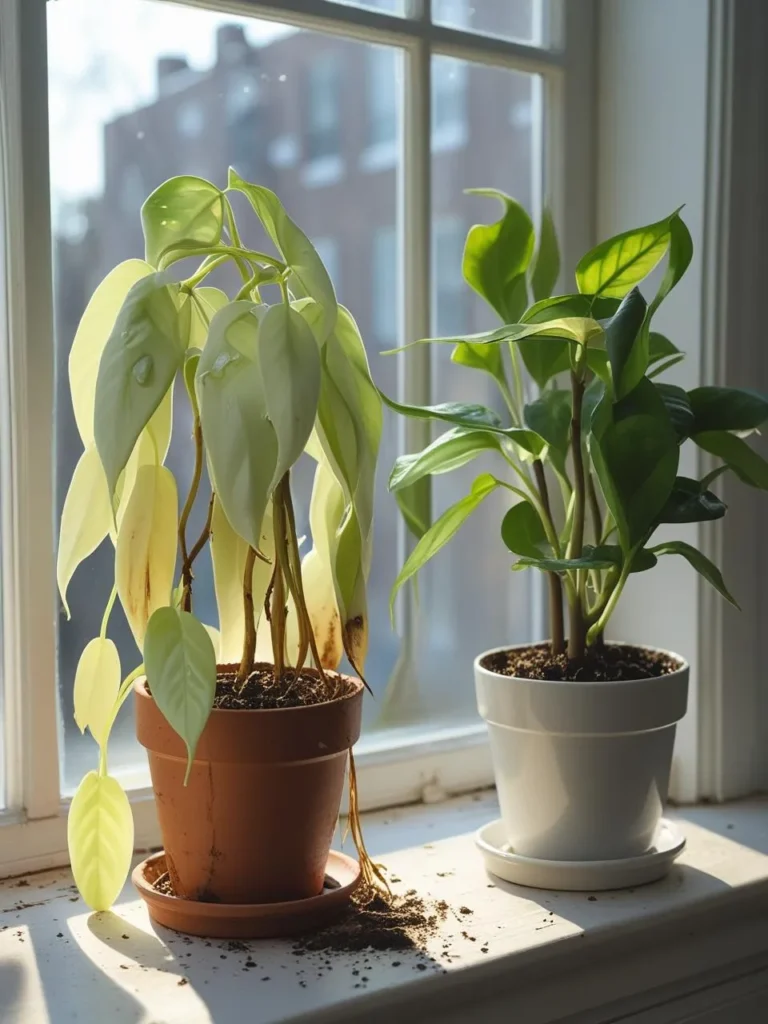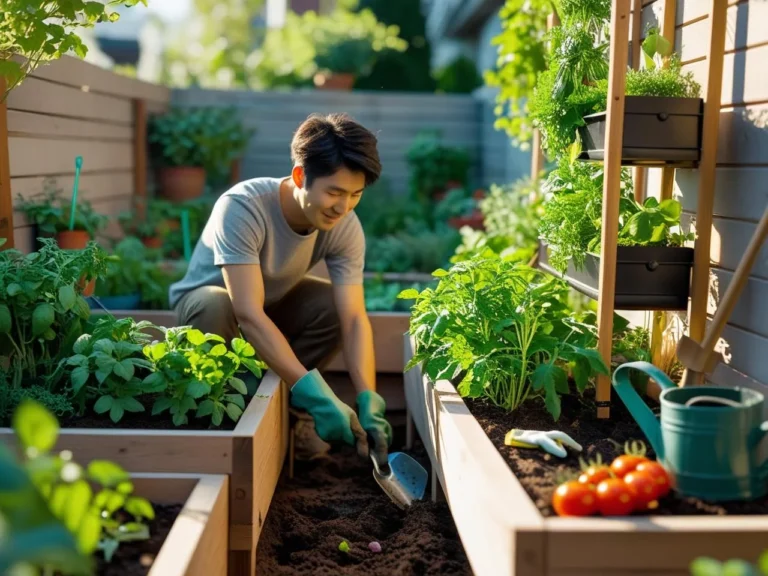How to Create a Native Container Garden on Your Patio
A patio might seem small, but it can host a thriving native container garden on your patio that brings nature right to your doorstep. Containers offer complete flexibility with light placement, soil composition, and garden design, making them perfect for small space native garden enthusiasts. Whether you’re working with a tiny balcony or a spacious deck, container gardening allows you to create a beautiful, eco-friendly space.
Native plants are perfectly suited for patio container garden setups because they’re naturally adapted to your local weather patterns, pest populations, and water conditions. This means less work for you and more success for your plants, creating a win-win situation for both gardener and environment.

Benefits of a Native Container Garden 🐝
Creating native plants in pots offers incredible advantages for urban and suburban gardeners. These water-smart plants require significantly less irrigation once established, making them perfect for busy lifestyles or regions with water restrictions. Their natural pest resistance eliminates the need for chemical treatments, creating a safer environment for both your family and visiting wildlife.
Native container gardens become instant pollinator magnets, providing crucial nectar sources for bees, butterflies, and hummingbirds throughout the growing season. Even a small collection of containers can serve as stepping stones for wildlife navigating urban environments.
The mobility of containers means you can easily rearrange your garden to optimize sunlight exposure, protect plants during extreme weather, or simply refresh your patio’s design. This flexibility makes container gardening ideal for beginners, renters, or anyone who likes to experiment with different layouts.
📌 Tip: Native plants don’t need fertilizers or pesticides—just sunlight and local soil!
Best Native Plants for Patio Containers 📋
| Plant Name | Sun Needs | Container Depth | Pollinator Friendly |
|---|---|---|---|
| Bee Balm | Full sun | 12–16″ deep | Yes (bees/hummingbirds) |
| Black-Eyed Susan | Full sun | 10–12″ deep | Yes (bees, butterflies) |
| Blue Grama Grass | Full sun | 10–14″ deep | No, but drought-tolerant |
| Milkweed | Full sun | 14–18″ deep | Yes (Monarch butterflies) |
| Wild Bergamot | Partial sun | 12–14″ deep | Yes (bees, hummingbirds) |
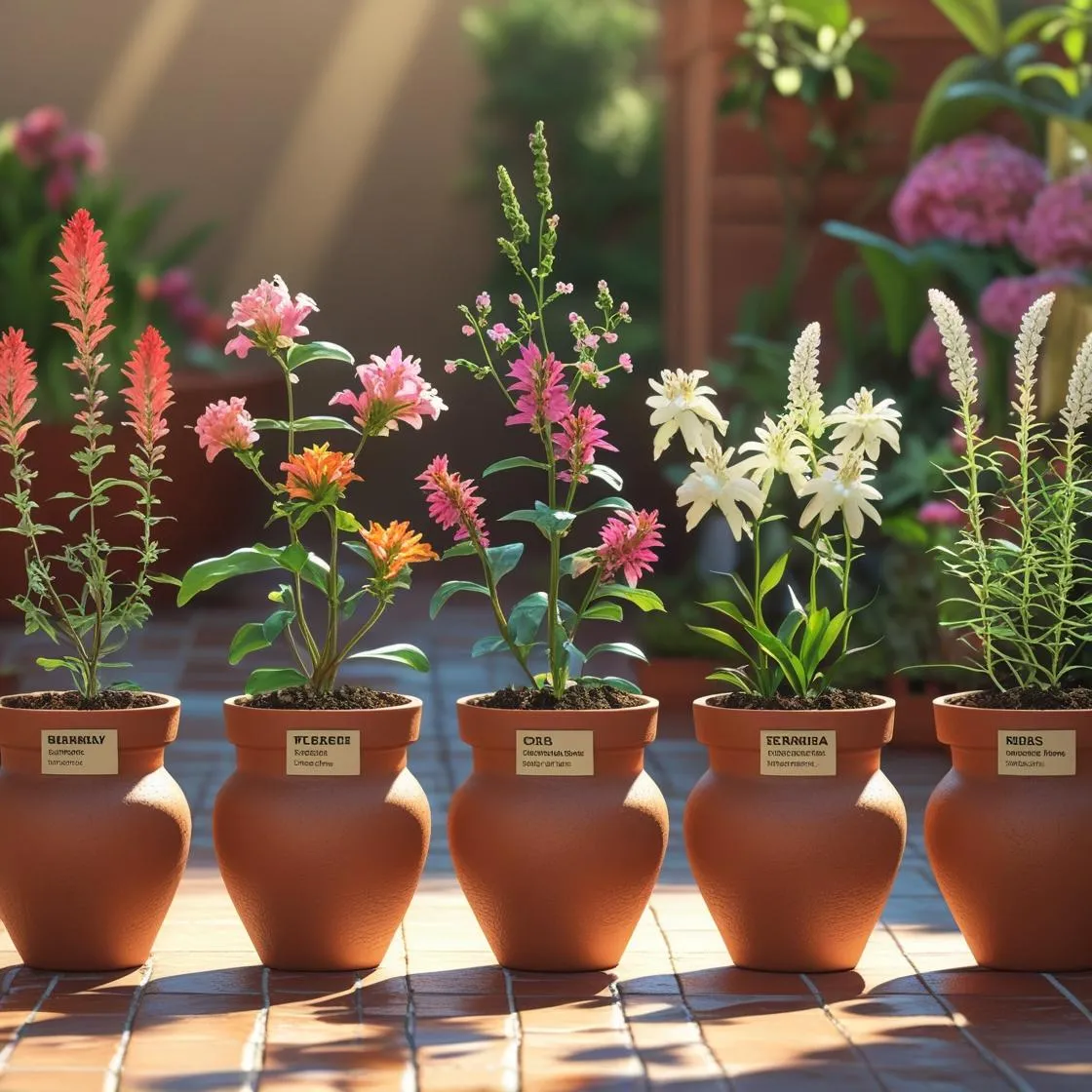
How to Set Up Your Native Container Garden 🪴
Successfully establishing low-maintenance container plants starts with choosing the right containers. Use breathable materials like terracotta, fabric grow bags, or wooden planters that allow proper air circulation around root systems. Avoid solid plastic containers that can overheat in direct sunlight and cause root damage.
Create a lightweight native soil mix using equal parts quality compost, perlite, and native soil or sand. This combination provides excellent drainage while retaining enough moisture for healthy plant growth. Avoid heavy potting soils that can become waterlogged and cause root rot in native plants.
Group plants with similar sunlight and water requirements together for easier maintenance. Most native plants prefer full sun exposure, so position containers near south-facing walls or railings where they’ll receive 6-8 hours of direct sunlight daily.
Add a 2-3 inch layer of organic mulch around plants to keep roots cool during hot weather and reduce water evaporation. Water deeply but infrequently—native plants prefer occasional deep watering over frequent shallow irrigation.
🐝 Pollinators will find your native garden fast—even in the city!
Native Patio Container Garden Setup Checklist 📋
| Step | What to Use | Why It Matters |
|---|---|---|
| Container choice | Terracotta or wooden planters | Breathable and stable |
| Soil mix | Compost + perlite + native soil | Light, drains well |
| Placement | Near wall or railing for light | More sun = more blooms |
| Watering schedule | Every 2–4 days depending on heat | Prevents overwatering |
| Maintenance | Deadhead flowers, clean leaves | More blooms, fewer pests |
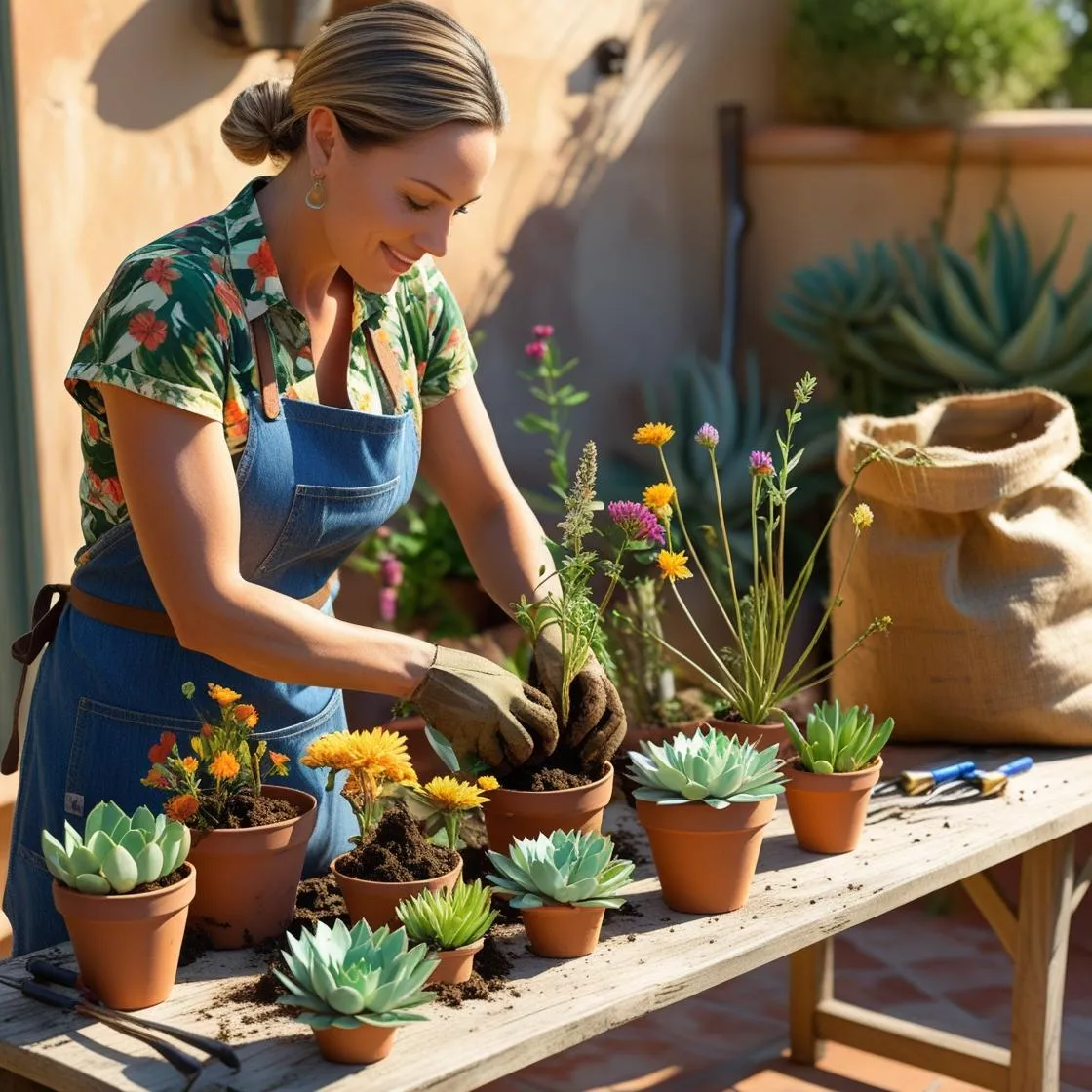
Design Tips for a Beautiful Patio Garden 🌼
Maximize visual impact in your eco-friendly balcony garden by creating varied heights using plant stands, wooden crates, or tiered shelving. This vertical approach allows you to showcase more plants while creating an impressive display that draws the eye upward.
Mix tall background plants like native grasses or milkweed with medium-height flowering perennials and compact front-edge plants. This layered approach creates natural-looking arrangements that feel lush and full despite limited space.
Include aromatic native herbs like wild lavender, native mint varieties, or wild bergamot to add sensory appeal to your container garden. These plants often attract different pollinators than flowers, increasing the biodiversity of your small space ecosystem.
Add functional elements like a shallow bee bath filled with pebbles and fresh water to provide hydration for visiting wildlife. Position it near your flowering containers to create a complete habitat that supports local pollinator populations.
🪴 Small touches create a big impact in tight spaces!
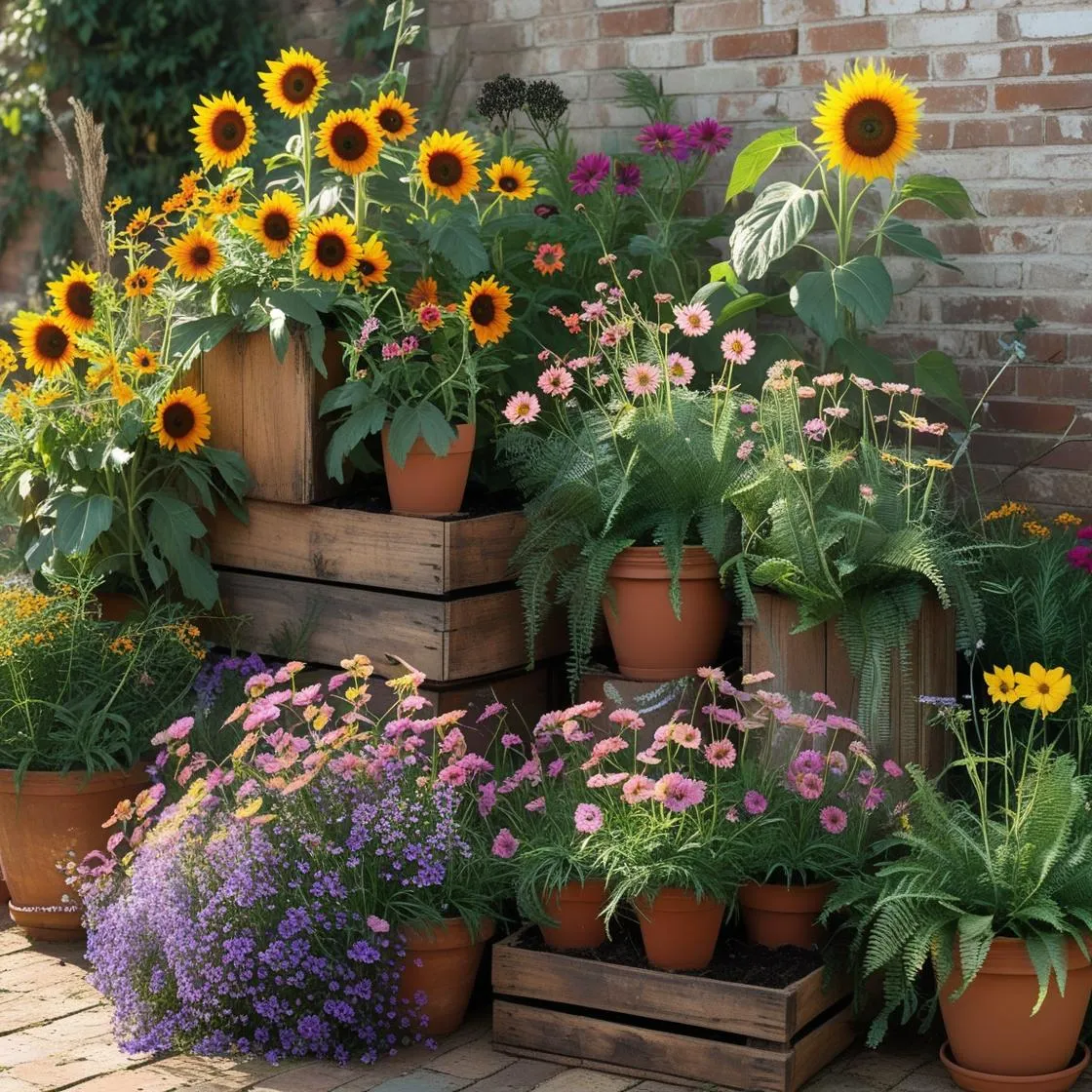
Conclusion 🌱
Creating a native container garden on your patio is an easy, eco-friendly way to bring natural beauty and wildlife habitat to any outdoor space. This approach supports local pollinators, reduces environmental impact, and transforms your patio into a vibrant living space that changes with the seasons.
Start with 3-4 native plants suited to your region’s climate and watch your patio bloom into a haven for both you and local wildlife. With minimal maintenance and maximum ecological benefit, native container gardening proves that even the smallest spaces can make a meaningful difference for local ecosystems.
📌 Choose local native plants—they thrive with less effort! 🪴 Containers let you grow natives anywhere—even on concrete patios! 🐝 Your patio can be a buzzing pollinator hub in just weeks!

